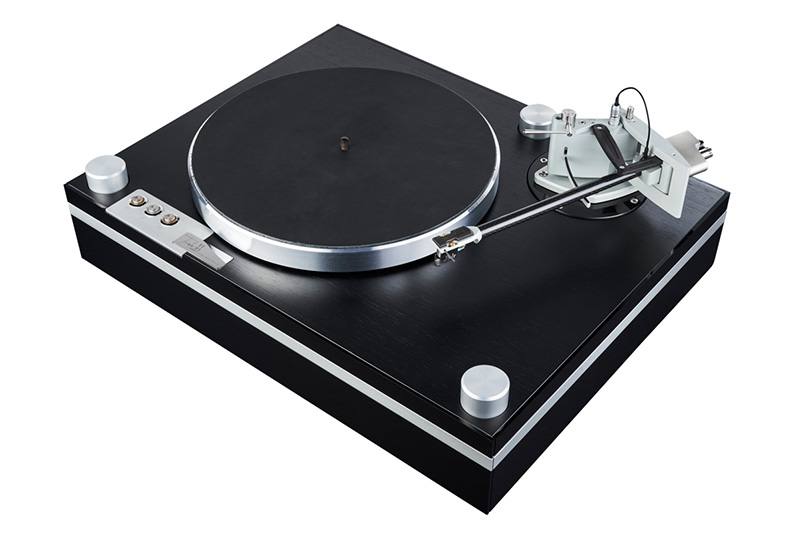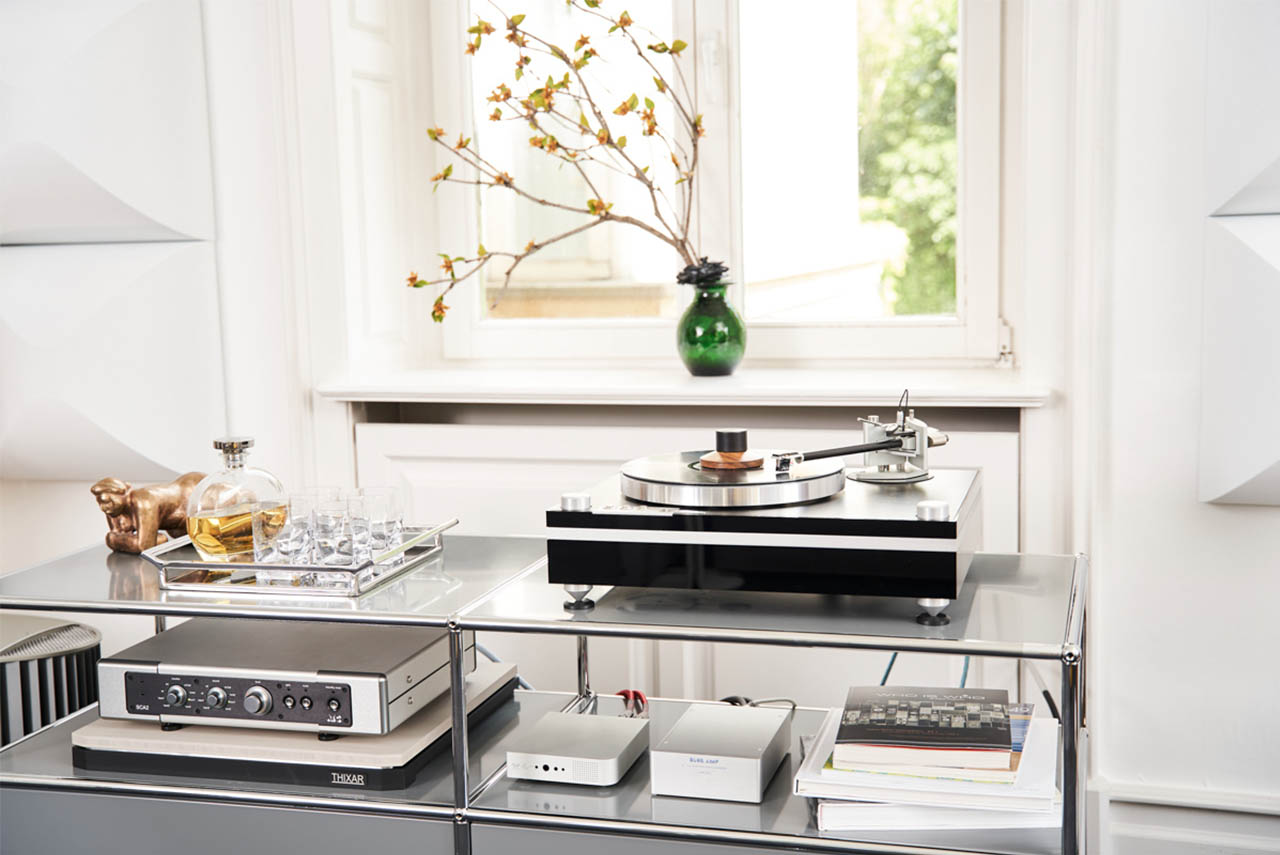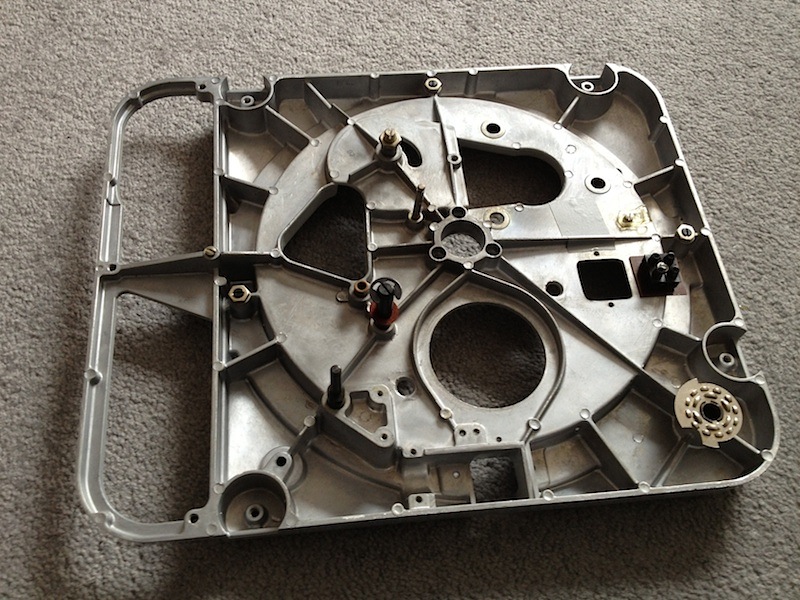You are using an out of date browser. It may not display this or other websites correctly.
You should upgrade or use an alternative browser.
You should upgrade or use an alternative browser.
Cart Vs Arm/TT
- Thread starter matt j
- Start date
Mike Reed
pfm Member
The Linn really is only a TD-150 with a better build quality. The design is almost identical.
It was mentioned in this thread previously about the genetic connection of LP12 and TD150, but I thought that Ivor took the Ariston (or was it another Scottish deck?) as his basis for rehashing. I had my TD150 some years before the LP12 started its circulation around the dealerships of Britain. I've had the LP12 as well (15 years later), but the similarity never dawned on me then either.
It was mentioned in this thread previously about the genetic connection of LP12 and TD150, but I thought that Ivor took the Ariston (or was it another Scottish deck?) as his basis for rehashing. I had my TD150 some years before the LP12 started its circulation around the dealerships of Britain. I've had the LP12 as well (15 years later), but the similarity never dawned on me then either.
I thought it was pretty well known that they're all just tweaked versions of the AR XA.
The TD150 pretty much fits in a Linn plinth with a bit of fettling.
Tony L
Administrator
It was mentioned in this thread previously about the genetic connection of LP12 and TD150, but I thought that Ivor took the Ariston (or was it another Scottish deck?) as his basis for rehashing.
That’s correct. The Ariston/Linn story is a rather ugly one by most accounts, though the linage is unquestionably AR XA first, then Thorens TD-150, then the Ariston RD11 which swiftly ‘became’ the LP12 much to Ariston’s annoyance. Patents etc are a very complex subject, but to my eyes there was nothing unique about the RD11 or LP12. It was all old technology by the time they arrived in the early ‘70s. Ed Vilchur (AR) had come up with the three-point suspension belt-drive format back in the ‘60s with the XA, the ‘single point’ bearing that Linn made such a song and dance about existed on certain Sony turntables and IIRC the TD-125 previously. The Linn being so identical to an early RD11 was pretty ugly (as I understand it they had been doing machining for Ariston and then decided to release it as their own). They are all ARs as far as I’m concerned!
daytona600
Registered User
Linn nick a design from Thorens never !
Thorens designer for 25years Helmut Thiele just released this - zero tracking error arm & lots of other novel design ideas


Thorens designer for 25years Helmut Thiele just released this - zero tracking error arm & lots of other novel design ideas


Arkless Electronics
Trade: Amp design and repairs.
Yeah the original LP12 is basically just a Thorens TD150 "copy " in a much thicker, heavier duty plinth really but the linn doesn't have the TD150's speed change capability (which I always remove from my Thorens decks but it prob makes no difference... I also remove the foam in the springs). Just treat them the same as an LP12, same set up procedure, siting requirements etc and you can't go wrong. They sound fab!
Best one I ever saw and heard had a jet black perspex plinth about an inch thick and perspex armboard with Ittok and some pretty high end cart and actually sounded slightly better than a then current LP12 in a mini bake-off. Whoever made the perspex plinth etc knew what they were doing and it looked great!
Best one I ever saw and heard had a jet black perspex plinth about an inch thick and perspex armboard with Ittok and some pretty high end cart and actually sounded slightly better than a then current LP12 in a mini bake-off. Whoever made the perspex plinth etc knew what they were doing and it looked great!
That’s correct. The Ariston/Linn story is a rather ugly one by most accounts, though the linage is unquestionably AR XA first, then Thorens TD-150, then the Ariston RD11 which swiftly ‘became’ the LP12 much to Ariston’s annoyance. Patents etc are a very complex subject, but to my eyes there was nothing unique about the RD11 or LP12. It was all old technology by the time they arrived in the early ‘70s. Ed Vilchur (AR) had come up with the three-point suspension belt-drive format back in the ‘60s with the XA, the ‘single point’ bearing that Linn made such a song and dance about existed on certain Sony turntables and IIRC the TD-125 previously. The Linn being so identical to an early RD11 was pretty ugly (as I understand it they had been doing machining for Ariston and then decided to release it as their own). They are all ARs as far as I’m concerned!
Some versions of the TD150 had the single point bearing as well, I have one to go in the one I will build for me.
Arkless Electronics
Trade: Amp design and repairs.
Oh and many TD150's, MkII's anyway, were made for Thorens by the legendary EMT company.... 'nough said
My main one is an EMT built one in fact.
My main one is an EMT built one in fact.
The bits that are important are sufficiently engineered and the design is solid. As an ex-LP12 owner/current TD-124 owner I was genuinely shocked by just how flimsy a TD-150 is! One was included in the absurd bargain system ‘buy it now’ that got me my first pair of Monitor Golds so I got to strip one down as I cleaned it up to sell on. A genius bit of design/marketing by Thorens as it was quieter than a 124 (the key selling point at the time) and must have cost them a fifteenth as much to make! I guess the TD-125 was the 124 replacement, and that does have a bit more to it engineering wise than the 150, but whether it is a better deck sonically I don’t know. The 150 (and the AR XA which inspired it) are very clever designs and capable of superb results. The Linn really is only a TD-150 with a better build quality. The design is almost identical.
My take on the 'flimsyness' of the TD-150 is that at that time, somewhere in the 60's, turntables didn't have to look like over engineered military tanks, it was sufficient that they 'just' did what they where supposed to.
One wonder if Ed Villchur could have guessed that, 60 years later, people would have long discussions on the merits of his design and it's followers
BTW. How is a turntable bearing made out that's not a single point?
Tony L
Administrator
My take on the 'flimsyness' of the TD-150 is that at that time, somewhere in the 60's, turntables didn't have to look like over engineered military tanks, it was sufficient that they 'just' did what they where supposed to.
Agreed, though I was comparing it to the TD-124 (and by context the 301/401) and there is a very substantial reduction in weight/materials and custom tooling in the 150 by comparison. I’m certainly no fan of mass for mass sake at all, I view it as a bad thing both in turntables and speakers.

To try and highlight my point this is the underside of a TD-124 chassis. It is spectacularly well made and rigid (without relying on mass) and would have been anything but cheap to make. It is only since the Keel that Linn even got into the same basic ballpark! I’m not slating the 150 here, I admire the sheer extent to which Thorens were able to cost-cut and end up with a deck which is still highly regarded today. The 150 is a very clever design. By comparison the 124 is a gigantic Swiss watch, and that is maybe not the most efficient way of making a record player!
Single point = no ball?
Yes, the end of the spindle is machined to a rounded point rather than using a captive ball like a TD-124, TD-150 etc. Linn were not first here despite their claims, the 125 and some high-end Sony I can’t recall the name of both had a machined single-point bearing.
Yes, the end of the spindle is machined to a rounded point rather than using a captive ball like a TD-124, TD-150 etc. Linn were not first here despite their claims, the 125 and some high-end Sony I can’t recall the name of both had a machined single-point bearing.
Thanks, that explains it. Could the Sony be the TTS-3000, btw?
Tony L
Administrator
Could the Sony be the TTS-3000, btw?
Yes, that’s it. Here’s a thread on Analogue Classics with some pics of the bearing. Far sharper than the smooth radius of the Linn, but conceptually the same thing. The Sony dates from 1966! It’s a turntable I’d rather like to try, it looks beautifully made as one would expect from Sony in that era.
Tony L
Administrator
A complete 1960's Japanese system would be cool.
I like Japanese kit a lot. I’ve pretty much got an early-70s Japanese system knocking around in various places in the house: Technics SL-120 MkI turntable, Akai 4000DB reel to reel, Sony ST-1150 tuner, TC-204SD cassette and TA-1140 amp. It all works, though I’d want to recap the amp before connecting it to any good speakers. The early ‘70s Sony kit is just beautifully built, seriously high quality and heavyweight construction, e.g. no plastic on the tuner, the tuning scale is real glass etc. Clearly good component choices too as it still works perfectly and it doesn’t appear to have been touched since it was made 1972-3!
I like Japanese kit a lot. I’ve pretty much got an early-70s Japanese system knocking around in various places in the house: Technics SL-120 MkI turntable, Akai 4000DB reel to reel, Sony ST-1150 tuner, TC-204SD cassette and TA-1140 amp. It all works, though I’d want to recap the amp before connecting it to any good speakers. The early ‘70s Sony kit is just beautifully built, seriously high quality and heavyweight construction, e.g. no plastic on the tuner, the tuning scale is real glass etc. Clearly good component choices too as it still works perfectly and it doesn’t appear to have been touched since it was made 1972-3!
Exactly how things should still be made.

